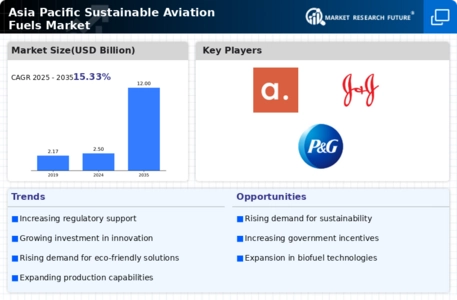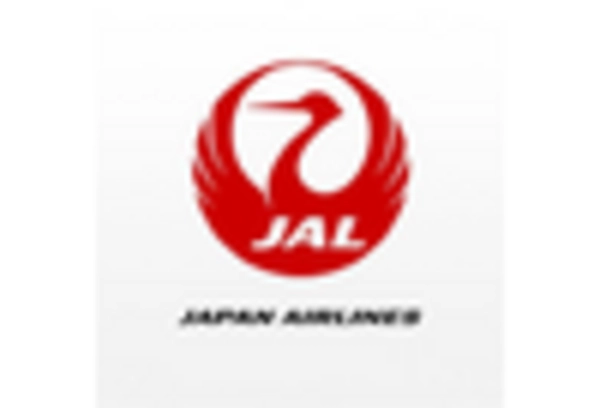Government Incentives and Funding
Government incentives and funding initiatives are playing a crucial role in the development of the Asia Pacific Sustainable Aviation Fuels Market. Various governments are offering financial support, tax breaks, and grants to encourage research and development in sustainable fuel technologies. For instance, several countries in the region have established funds specifically aimed at promoting the production and use of sustainable aviation fuels. This financial backing not only reduces the economic burden on companies investing in sustainable technologies but also fosters collaboration between public and private sectors. As a result, the availability of government incentives is likely to stimulate innovation and investment in the sustainable aviation fuel sector, thereby enhancing market growth prospects.
Increasing Environmental Regulations
The Asia Pacific Sustainable Aviation Fuels Market is experiencing a surge in demand due to increasing environmental regulations aimed at reducing carbon emissions. Governments across the region are implementing stringent policies that mandate lower emissions from the aviation sector. For instance, the International Civil Aviation Organization has set ambitious targets for carbon neutrality by 2050, which has prompted countries in Asia Pacific to adopt sustainable aviation fuels as a viable solution. This regulatory push is likely to drive investments in the development and production of sustainable fuels, thereby enhancing market growth. As airlines seek to comply with these regulations, the adoption of sustainable aviation fuels is expected to become a critical component of their operational strategies, further solidifying the market's trajectory.
Rising Consumer Awareness and Demand
Consumer awareness regarding climate change and environmental sustainability is on the rise, significantly impacting the Asia Pacific Sustainable Aviation Fuels Market. Passengers are increasingly seeking eco-friendly travel options, prompting airlines to respond by incorporating sustainable aviation fuels into their operations. Recent surveys indicate that a substantial percentage of travelers are willing to pay a premium for flights that utilize sustainable fuels, reflecting a shift in consumer preferences. This growing demand is likely to encourage airlines to invest in sustainable aviation fuel technologies and partnerships, thereby fostering market expansion. As the aviation industry aligns itself with consumer expectations, the integration of sustainable fuels is anticipated to play a pivotal role in shaping the future of air travel in the region.
Strategic Partnerships and Collaborations
Strategic partnerships and collaborations among stakeholders are emerging as a key driver in the Asia Pacific Sustainable Aviation Fuels Market. Airlines, fuel producers, and technology developers are increasingly joining forces to advance the development and commercialization of sustainable aviation fuels. These collaborations often focus on sharing resources, knowledge, and technology, which can accelerate the pace of innovation and reduce costs. For example, partnerships between airlines and biofuel producers have led to successful pilot projects that demonstrate the feasibility of sustainable fuels in commercial aviation. Such collaborative efforts are expected to enhance the overall supply chain for sustainable aviation fuels, thereby facilitating market growth and ensuring a more sustainable future for the aviation industry in the region.
Technological Innovations in Fuel Production
Technological advancements in the production of sustainable aviation fuels are significantly influencing the Asia Pacific Sustainable Aviation Fuels Market. Innovations such as the development of advanced biofuels and synthetic fuels derived from renewable sources are enhancing the efficiency and cost-effectiveness of fuel production. For example, the use of waste feedstocks and carbon capture technologies is becoming more prevalent, potentially reducing production costs and increasing fuel availability. As these technologies mature, they are expected to lower the barriers to entry for new market players and stimulate competition. Consequently, the proliferation of innovative fuel production methods is likely to accelerate the adoption of sustainable aviation fuels, thereby contributing to the overall growth of the market.

















Leave a Comment